This article may be on the longest bridges in Africa but it would amaze you to discover that Africa is home to some of the longest bridges in the world, spanning major rivers and connecting different parts of the continent.
These bridges have played a crucial role in the economic and social development of the region, allowing for improved transportation and communication. They not only ease the movement of goods and services but also provide a vital link between different regions, cultures, and communities.
One of the most notable bridges in Africa is the Third Mainland Bridge in Nigeria. At over 11 kilometres long, it is the longest bridge in West Africa and connects the Lagos mainland to the island. The bridge was completed in 1990 and has greatly improved transportation in the region, reducing travel time and congestion.
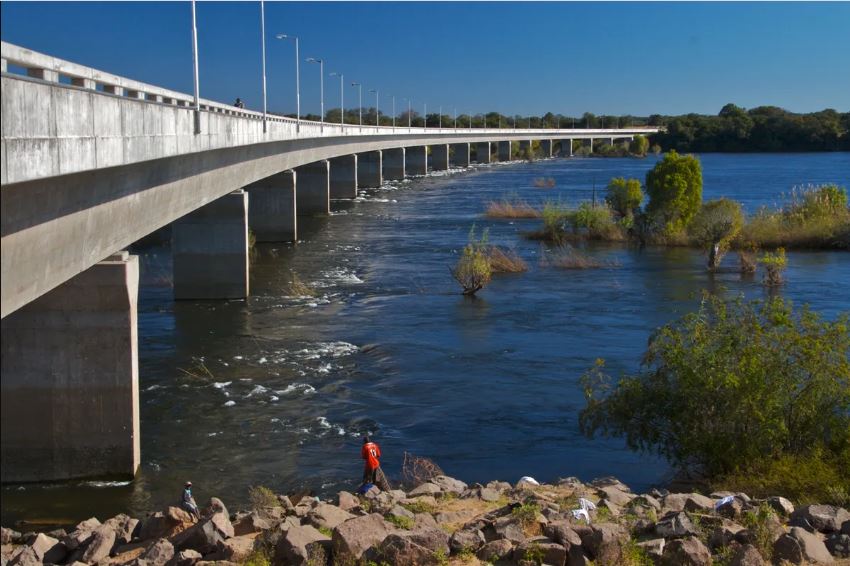
Another important bridge in Africa is the 6th April Bridge in Egypt. This bridge spans across the Nile River and connects the cities of Cairo and Giza. It was completed in 1996, and at a length of 6.5 kilometres, it is the longest bridge in Egypt.
List of Longest Bridges in Africa
Here is a list of the top 10 longest bridges in Africa:
The 6th of October Bridge
It is a cable-stayed bridge in Egypt that spans the Nile River in Cairo. It is one of the longest bridges in Africa, with a total length of 20.5 kilometres (about 12.7 miles). It was completed in 1996 and was named after the date of the 1973 Egyptian-Israeli War.
The bridge has six lanes for vehicle traffic and a separate lane for pedestrians and cyclists. It is an important transportation link for both commuters and tourists, as it connects the city of Cairo with its western suburbs and the Giza Governorate. The bridge also provides a scenic view of the Nile River and the city.
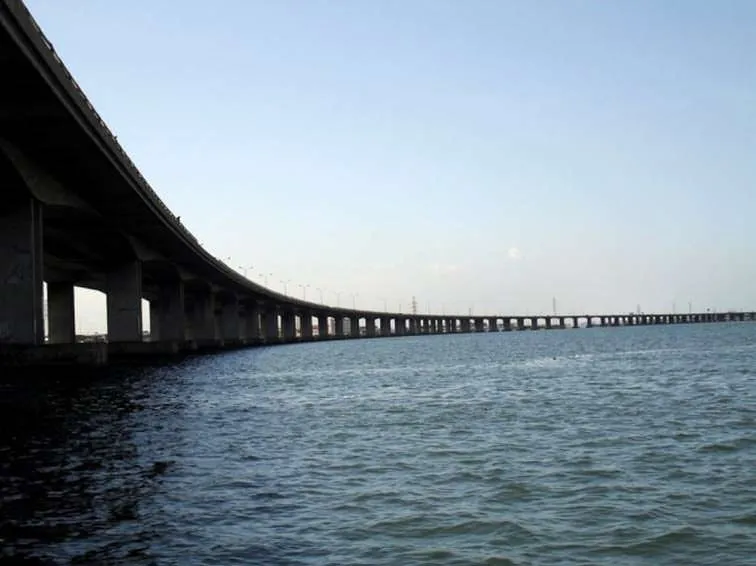
The Third Mainland Bridge in Nigeria
This is an 11.8-kilometre (about 7.3 miles) long bridge that spans across the Lagos Lagoon, connecting the mainland of Lagos to the island. It is the longest of three bridges in Lagos and was completed in 1990.
The bridge is an important transportation route for residents and visitors to the city, and it is also a popular spot for locals to gather and socialize.
- The 10 Best Resorts in Abuja for 2023
- Most beautiful places to visit in Nigeria for Holidays
- 10 Marketable Skills for the Future
The Suez Canal Bridge
Also known as the Mubarak Peace Bridge or the Egyptian-Japanese Friendship Bridge, It is a cable-stayed bridge that spans the Suez Canal in Egypt. It is approximately 3.9 kilometres (2.4 miles) long and connects the cities of Port Said and Ismailia.
The bridge was built with the assistance of Japanese engineers and was officially opened in 2001. It is one of the world’s longest bridges of its kind and provides a crucial link for transportation and trade between the Mediterranean and Red Seas.
The Mozambique Island Bridge
The bridge is a 3.8 km long bridge connecting the Island of Mozambique to the mainland. It spans across the Indian Ocean, linking the island to the city of Nacala on the mainland.
The bridge was officially opened in 1969, and it was the first bridge built in Africa to cross the Indian Ocean. It has played an important role in the development of the region by providing a reliable connection between the island and the mainland, allowing for the transportation of goods and people, and promoting economic growth.
The bridge is also a popular tourist attraction, providing visitors with a unique perspective of the island and the ocean. The bridge is made of concrete, and it’s considered a major engineering achievement.
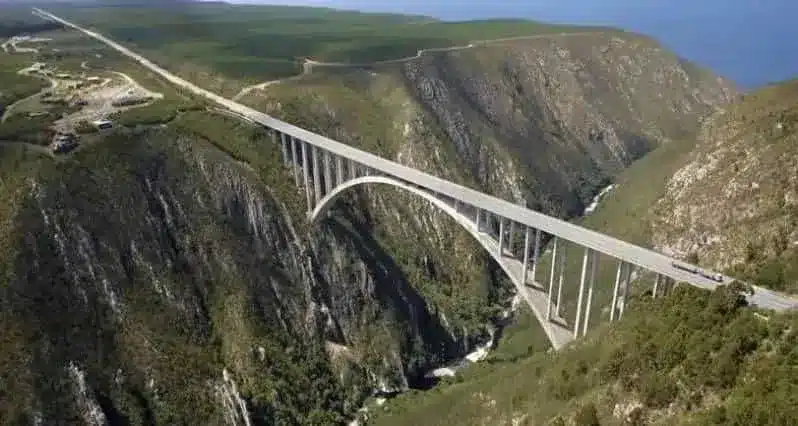
The Dona Ana Bridge
Located in Mozambique, the bridge spans a distance of 3.67 kilometres (2.28 miles). It is a major transportation link in the country, connecting the cities of Maputo and Catembe across Maputo Bay.
The bridge was officially opened in 2018 and is considered one of the longest bridges in Africa. It was built to ease traffic congestion and improve access to the city of Maputo.
The Armando Emilio Guebuza Bridge
is a bridge located in Mozambique that spans 2.37 kilometres. It is named after Armando Emilio Guebuza, a former President of Mozambique.
The bridge connected the cities of Maputo and Catembe and was built to ease traffic congestion and improve transportation between the two areas. It is considered one of the longest cable-stayed bridges in Africa and was completed in 2018.
SEE: Top Richest Countries in Africa by GDP 2022
The Qasr al-Nil Bridge
The bridge is located in Cairo, Egypt. It has a load capacity of 1.9 kilonewtons (kN). It is a road bridge that spans the Nile River and connects the neighbourhoods of Garden City and Downtown Cairo. It was built in the early 20th century and was designed by French engineer Gustave Eiffel. It was officially opened in 1891.
The Wouri Bridge
It is a cable-stayed bridge located in the city of Douala, Cameroon. The bridge spans the Wouri River and is 1.8 kilometres (1.1 miles) long. It was built to reduce traffic congestion in the city and improve access to the port of Douala, which is one of the busiest in West Africa.
The bridge was completed in 2000 and officially opened to traffic in 2001. It is considered a major infrastructure project and a symbol of modernity in Cameroon.
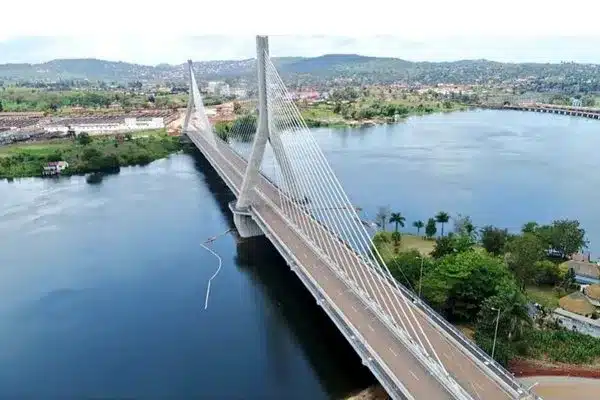
The Mkapa Bridge
It’s a cable-stayed bridge in Tanzania that spans the Rufiji River. It is approximately 0.97 kilometres in length and connects the districts of Kibaha and Mkuranga.
The bridge was officially opened in 2007 and is named after the third president of Tanzania, Benjamin William Mkapa. It is an important transportation link for the region, connecting the port city of Dar es Salaam to the country’s interior.
ALSO SEE: Top 20 Countries To Go For Vacations Around the World
The Katima Mulilo Bridge
The 900-meter-long bridge spans the Zambezi River in Namibia. It has 19 spans and was opened for transportation on May 14, 2004.
The bridge is relatively new compared to other long bridges in the world. It connects the town of Katima Mulilo in the Zambezi Region of Namibia with the rest of the country and Zambia. It is a vital infrastructure that facilitates trade and transportation in the region.
Importance of bridges in Africa
Bridges are important in Africa for a variety of reasons. They help improve transportation and connectivity between communities, which can positively impact economic development. Bridges also provide access to essential services such as healthcare and education and can help to reduce isolation and improve social cohesion.
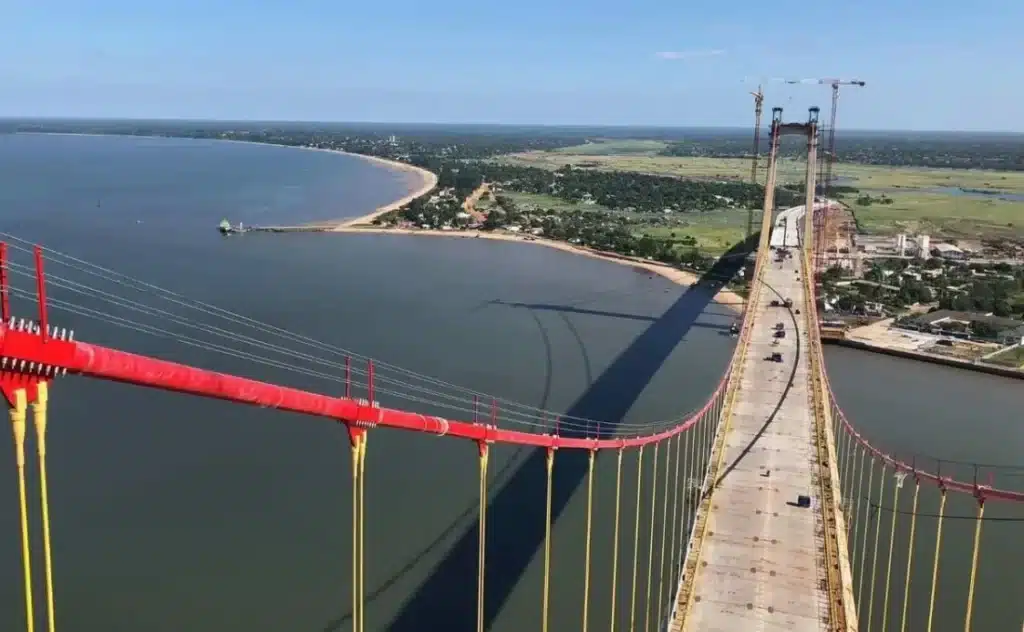
Additionally, bridges can help to improve safety by reducing the need to cross rivers and other bodies of water during dangerous flood conditions. Overall, bridges play an important role in improving the quality of life for people in Africa.
Bridges are an important infrastructure in African countries as they provide a crucial link between communities and facilitate trade and economic development.
Many rural areas in Africa are isolated due to poor transportation infrastructure, and bridges can help connect these communities to urban centres and markets. They also provide access to education, healthcare and other services.
In addition, bridges can improve road safety and reduce travel time and costs.
The Tallest Bridge in Africa
The Bloukrans Bridge is a concrete arch bridge that spans the Bloukrans River near Nature’s Valley in the Western Cape province of South Africa. It is the highest commercial bungee jumping location in Africa and the world at 216 meters (709 feet).
The bridge also serves as a popular tourist attraction and is open to the public for bungee jumping and other adventure activities.
The Bloukrans Bridge was built in 1983 and spanned a total of 272 meters (892 feet) across the Bloukrans River. It is a single-arch bridge made of concrete and steel, considered a significant engineering achievement. The bridge is part of the national route N2 and is used for both vehicular and pedestrian traffic.
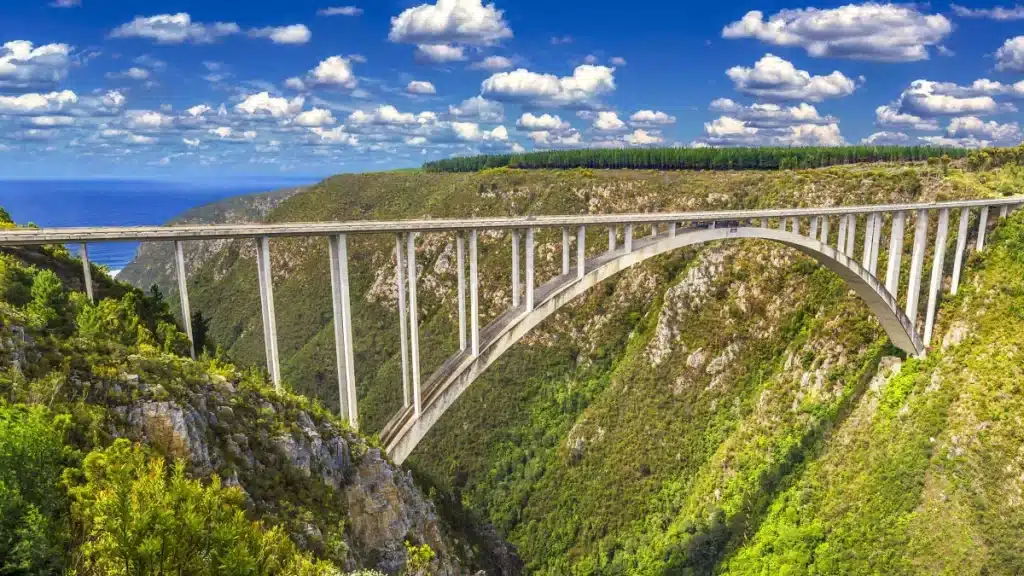
The bridge’s bungee jumping platform is located at the top of the arch and is 216 meters (709 feet) above the river. The jump is operated by Face Adrenalin, a South African adventure company. The bungee jump is considered the highest commercial jump in the world and attracts thrill-seekers from all over the globe.
In addition to bungee jumping, the Bloukrans Bridge is also a popular spot for bridge walking and abseiling. Visitors can also take a guided tour of the bridge and learn about its history and construction.
The location of the bridge is also very scenic, as the beautiful Tsitsikamma Mountains and the Indian Ocean surrounding it. Visitors can enjoy nature walks, hikes, and picnics in the surrounding area.
SEE: Who Is the Best Nigerian President from 1960 Till Date?
The First Bridge in Africa
The Dona Ana Bridge is a bridge located in the city of Maputo, Mozambique. It spans Maputo Bay and connects the city centre with the suburb of Katembe. It was the first bridge built in Africa and the first cable-stayed bridge in Mozambique.
The Portuguese engineer Edgar Cardoso designed the bridge which was built by the Portuguese construction company Soares da Costa. Construction began in 1977 and was completed in 1983. The bridge has a total length of 2.8km and a main span of 300m.
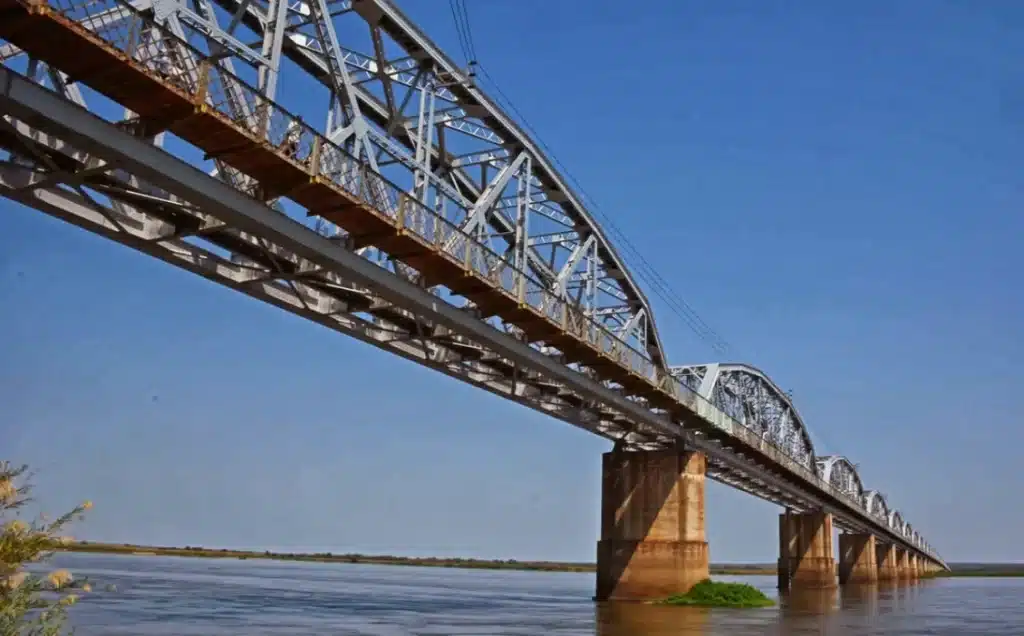
The bridge is considered an important engineering achievement and is a popular tourist attraction in Maputo.
The Dona Ana Bridge is a cable-stayed bridge supported by two concrete towers 156 meters tall. The bridge deck is made of steel and concrete and has a total width of 21 meters. The bridge deck is supported by steel cables that are anchored to the towers. The bridge deck can support vehicles, bicycles and pedestrians.
The bridge was named after Dona Ana de Sousa, a woman who lived in the area during the 16th century. It was built as a way to alleviate traffic congestion in the city and to improve the transportation of goods and services between the city centre and the suburbs.
The bridge was officially opened on February 19, 1983, and it was a significant event in the history of Mozambique. The bridge was built with a combination of local and foreign resources, including equipment, materials and expertise.
The Dona Ana Bridge is an important part of Maputo’s skyline, and it is considered one of the city’s main landmarks. The bridge is also a popular spot for photographers, as it provides a beautiful view of the city and the bay. There are also plans for the bridge to be used for recreational activities such as bungee jumping and zip-lining in the future.
Other popular bridges in Africa include:
Nkurruzu Bridge, Rwanda
Mkapa Bridge, Tanzania
De Beers Centenary Bridge, South Africa
The Octave Feuillet Bridge, Congo
The Cairo Tower Bridge, Egypt.
FAQs
Africa offers different experiences in different seasons. Plan accordingly. Winter in South Africa is cheaper and offers wildlife and migrations. Spring is great for wildflowers in Cape Town.
Africa is known as Alkebulan – meaning ‘mother of mankind’ or ‘garden of Eden’ – is the oldest and only indigenous name used by Moors, Nubians, Numidians, and Khart-Haddans, per Dr Cheikh Anah Diop’s Kemetic History of Afrika.
Africa has around 3,000 tribes.
Because Africa was challenging to navigate, and its interior was difficult to explore. This was due to the plateau rim and Sahara Desert obstacles.
The history of Africa starts with the emergence of hominids and modern humans in East Africa around 300,000-250,000 years ago and continues to the present day as diverse, politically developing nation-states.
Conclusion
From my knowledge of the bridges you have mentioned, it appears that many of the longest bridges in Africa are relatively new and were built in the 21st century.
They are typically large-scale infrastructure projects that were built to connect major cities or regions and facilitate trade and transportation.
Some of these bridges also span large rivers, such as the Zambezi and Congo, which can be challenging to build across due to their width and depth.
Additionally, many of these bridges were built to improve the infrastructure and economic development of the region.
